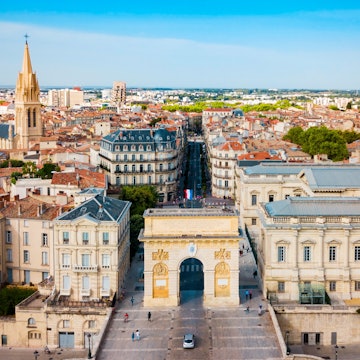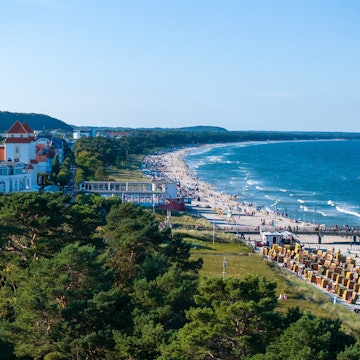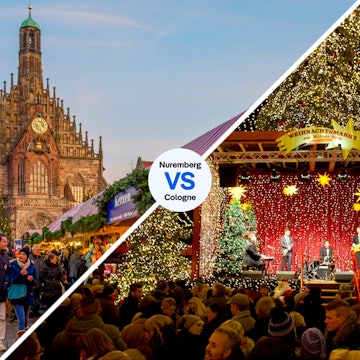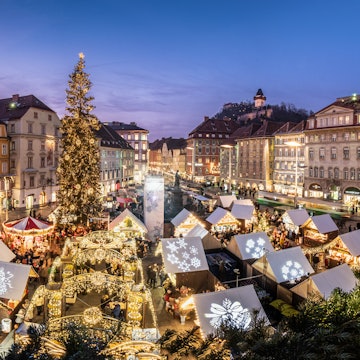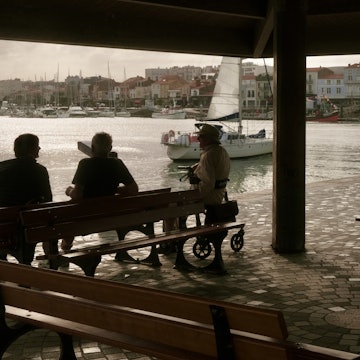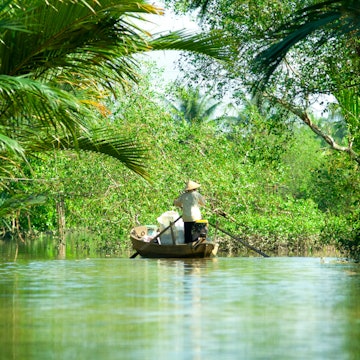
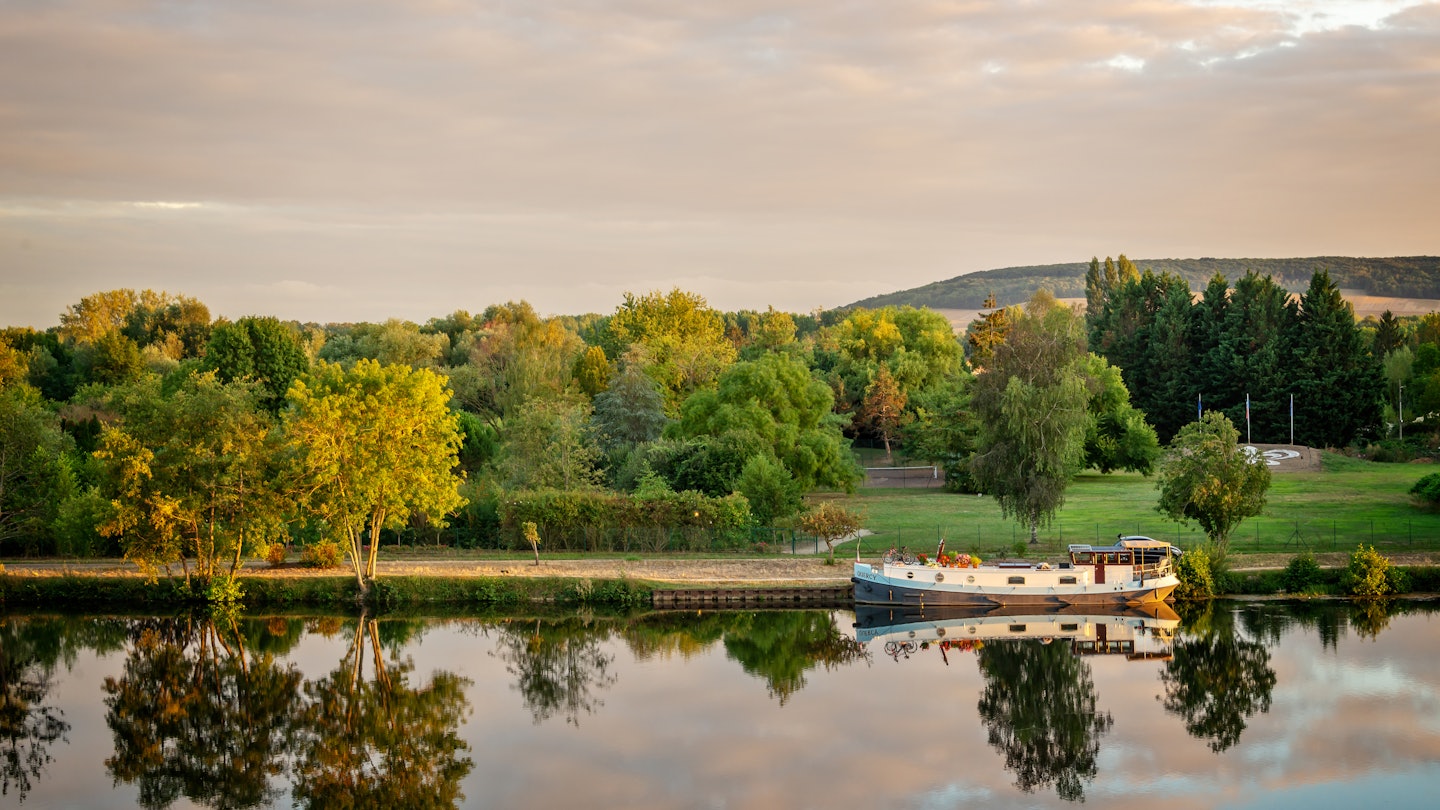
River Yonne in Burgundy, France. Delpixel/Shutterstock
Transport and tranquility are usually mutually exclusive, but not if you book a houseboat and cruise along France's canals and navigable rivers. You can stop at your whim to pick up fresh produce from a local market, dine at a village restaurant or glide by a local château by bicycle.
Thousands of kilometers of rivers and canals link together in a vast web touching much of the country and allowing access to the surrounding seas. Changes in altitude are taken care of by a system of écluses (locks) and boats range from self-hire houseboats to luxury hotel barges.
There are hundreds of equally wonderful canal and river routes, dotted with small houses where the lock keepers used to live (and some still do). Below is just a sample of what lies ahead. Additional world-class routes include the Canal de la Marne au Rhin, a link between Paris and Alsace and Germany via the Rhine and the 360km-long (224 miles) Canal de Nantes à Brest in Brittany.

Canal du Midi
Stretching for 241km (150 miles) between Toulouse and Sète, the Canal du Midi is one of the great waterways of southern France. Completed in 1681 at the behest of Louis XIV and classified as a UNESCO World Heritage site since 1996, the canal was designed to provide a trading route between major French ports. Combined with the Canal de Garonne, it forms part of the Canal des Deux Mers (Canal of the Two Seas), which enables boats to travel all the way from the Atlantic (near Bordeaux) to the Mediterranean.
It’s a work of art as much as engineering, lined with stately plane trees, puttering houseboats and gorgeous riverside towns. You can stroll or pedal along the towpaths as you stop along the canal’s route through Languedoc-Roussillon or visit its cities – Toulouse, Agde, Minerve, Béziers, Narbonne, Carcassonne and Sète.
It’s also worth stopping at the Musée Canal du Midi in St-Ferréol, which explores the history of the waterway and the life of its chief engineer, Paul Riquet.
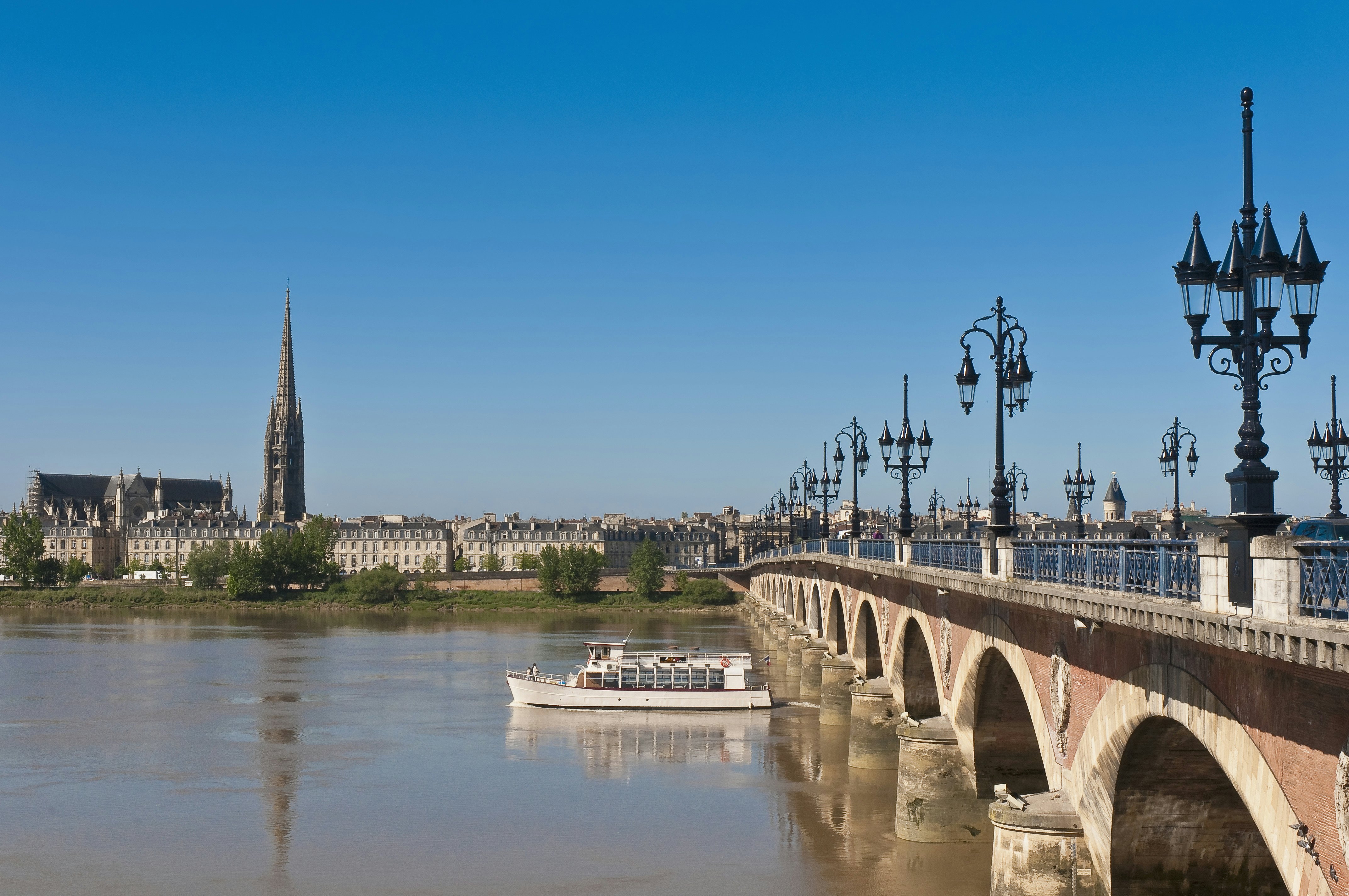
Canal de Garonne
With 53 locks, this serene canal falls from the junction with the Canal du Midi at Toulouse to Castets-en-Dorthe at the Garonne river. The Garonne then lets out to the Bay of Biscay just beyond wonderful Bordeaux, a jolly stop for its gorgeous architecture and wine aplenty. Or take a day trip from the boat to Sauternes for its sweet and white wines, or Roquefort, for its world-famous cheese. Another fascinating stop along the way is Moissac, a large riverside town, partly on an “island” formed between the Tarn and the Garonne Canal. Its crowning glory is the UNESCO-listed Abbaye St-Pierre, a monumental abbey church.
Canal de Bourgogne
Canal boating between Bourgogne vineyards really can’t be beat. Burgundy's 1200km (746 miles) of placid waterways include the Rivers Yonne, Saône and Seille and a network of canals, including the Canal de Bourgogne, the Canal du Centre, the Canal Latéral à la Loire and the Canal du Nivernais, which are detailed below.
The spectacular 242km (150-mile) Canal de Bourgogne connects the River Saône in the south at Saint-Jean-de-Losne, with the river Yonne at Laroche-Migennes – which in turn connects to the Seine if you want to continue on to Paris. Highlights include touring the region's magnificent vineyards and sampling the wines, as well as visiting cities like Dijon and Beaune. West of Dijon, along and around the Canal de Bourgogne, the Pays d'Auxois is a rolling land of mustard fields, wooded hills and escarpments dotted with fortified hilltop towns, including Semur-en-Auxois. Tucked into this verdant landscape are a pair of exceptional historical sites, the Cistercian Abbey of Fontenay and the MuséoParc Alésia historical museum.
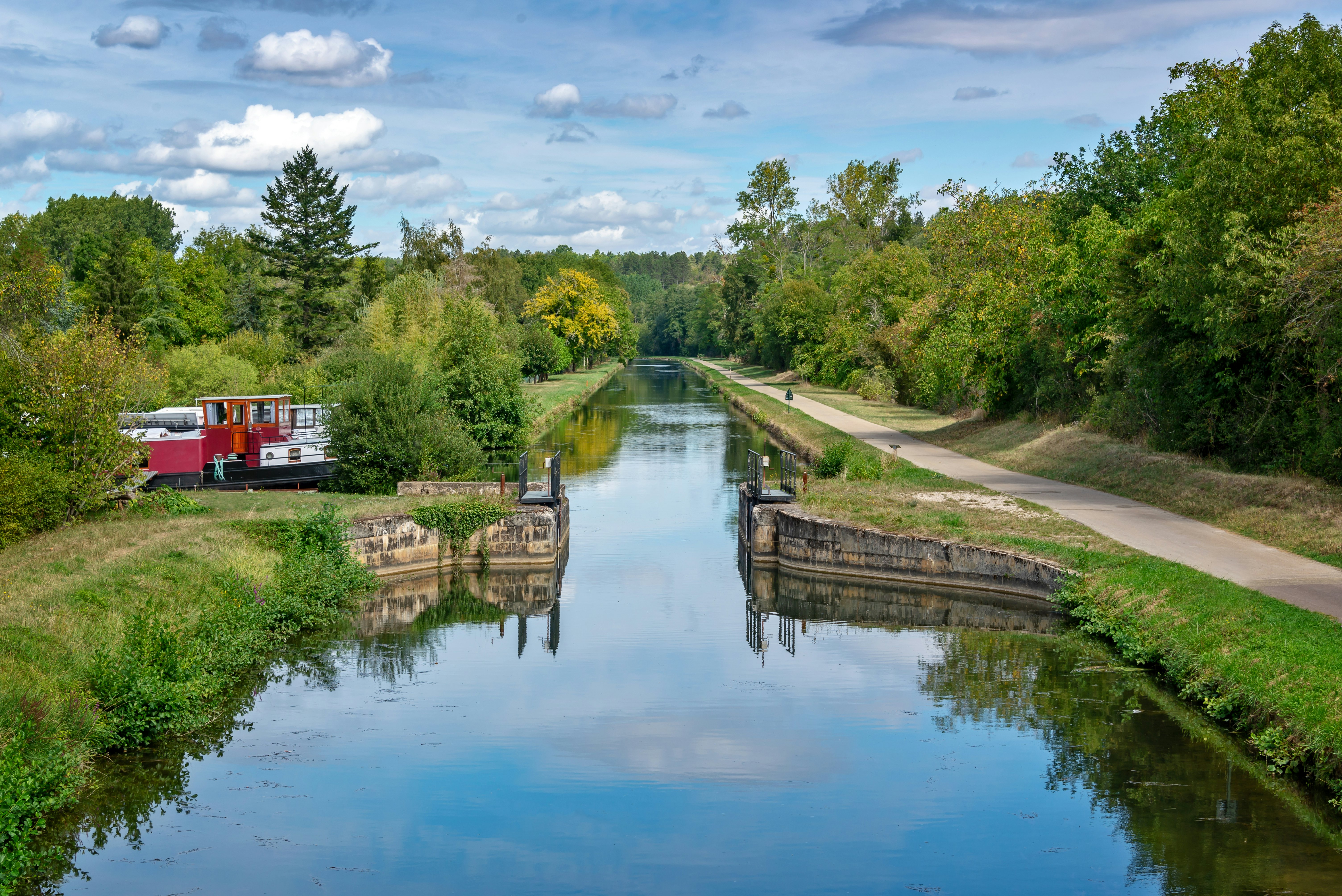
Canal du Nivernais
Originally constructed for moving firewood from the Morvan’s forests to Paris, the peaceful Canal du Nivernais crosses the Yonne River valley, sometimes merging with the river itself and connecting the Loire with the Seine. A top spot along the way, the ancient city of Auxerre dates back to Gallo-Roman times and now curves beautifully along the Yonne, with the magnificent Gothic Cathédrale Saint-Étienne d'Auxerre towering overhead.
You can also tour vineyards – or simply stock the wines of the region, with Chablis being its reigning queen.
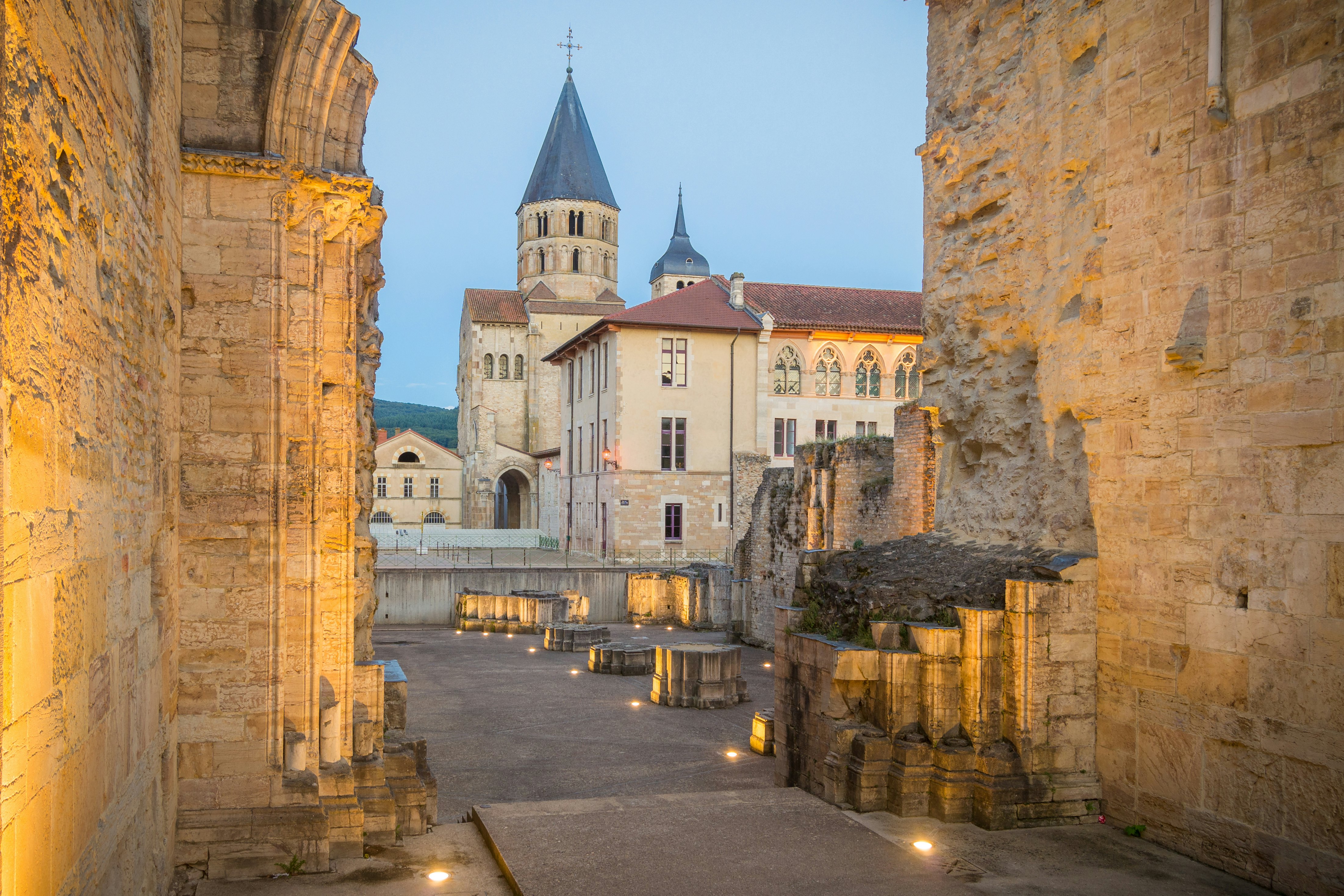
Loire Valley canals
A batch of bitty canals interlink between Burgundy and the châteaux-laden Loire Valley. They include the Canal du Centre, Canal Latéral à la Loire and the Canal de Briare.
Midway between Dijon and Lyon, Burgundy's southernmost département (county) Saône-et-Loire, is an inviting land of rolling green fields criss-crossed by hedgerows and dotted with indigenous Charolais beef cattle. The Canal du Centre and some fabulous bike paths meander through Saône-et-Loire's forests and pastureland.
During the region's medieval heyday it was home to the largest church in all of Christendom, the magnificent Abbey of Cluny. These days it's a sleepier place, but pretty châteaux and little-known Romanesque chapels still sit around almost every bend, hinting at Saône-et-Loire's long history and making this a delightful area for day trips.
Other regional highlights include wines galore: from the wine-growing villages around Mâcon to Sancerre, which produce some of France's finest whites – taste tests abound.
Shorter hops and day trips on France's canals
If you’re not able to do a full canal cruise, you can also hop aboard a small day trip boat or punt the day away from French cities laced with canals, like Colmar. For example, boat cruises run along the Garonne in Toulouse from the Quai de la Daurade; in summer, some boats also travel onto the Canal du Midi. In the Dordogne Valley you can go river boating from La Roque Gageac aboard a flat-bottomed gabarre (boat) with Gabarres Norbert.

Cycling the canals
Most boats have bikes on board or can arrange cycling day trips. With a vast network of cycling paths, the French canal chemins de halage (towpaths) are pure two-wheeling joy. Voies vertes (greenways) stretch for thousands of kilometers along old canal towpaths and are also open to walkers and horse riders, and many sections are paved to ensure a silky-smooth ride. Many also connect to véloroutes (designated cycling paths).
You can cycle on or very near the chemin de halage of the Canal de Bourgogne all the way from Dijon to Migennes (225km [140 miles]). The section from Montbard to Tonnerre (65km [40 miles]) passes by Château d'Ancy-le-Franc; between Montbard and Pouilly-en-Auxois (58km), spurs go to the Abbaye de Fontenay and Semur-en-Auxois.
Similarly, peaceful towpaths along the Canal du Midi link the Atlantic with the Mediterranean via the canals. Check out Le Canal des 2 Mers à Vélo.

Tips for canal travel in France
When to go
Rental companies offer boats from late March to mid-November (canals close for repairs in winter). Advance reservations are essential for holiday periods, over long weekends and in July and August, especially for larger boats. The best bet is to travel during the shoulder seasons (May, June and September), when the weather is fine but wait times are shorter at the locks and crowds are fewer.
Where to find a map of France's canals
Waterway books with detailed maps are a must. Excellent guides include Breil and Imray, or check out the French Waterways website for loads of info and maps on the country’s canals and waterways.
How to book a French canal trip
Usually, companies like Barge Lady Cruises are brokers that connect you to the outfit owning the boat or boats. Things to consider are:
The size of the boat.
Whether there will be a skipper and other staff – like a cook or steward – on board.
How many staterooms there are (and thus the number of people you may share with).
What types of day trips are offered and how customizable they are.
How to book a luxury barge cruise instead
Levels can become quite luxe, with your own private chef and bespoke food, drink and day trips. Smaller luxury boats can have as few as two staterooms, with a maximum of four guests, which are perfect for friends or family who want a private boat. A top purveyor in the field is Belmond, with its smaller boat, Allouette on the Canal du Midi, or larger ones like Fleur de Lys in Burgundy.
How to rent a canal boat
If you’re up for piloting yourself, you can hire a boat. They generally accommodate from two to 12 passengers and are fully outfitted with bedding and cooking facilities. Anyone over 18 can pilot a riverboat, but first-time skippers are given a short instruction session so they qualify for a carte de plaisance (temporary cruising permit). The speed limit is 6km/h (4mph) on canals and 8km/h (5mph) on rivers. It’s important to read up on the route you will be taking to learn how to handle the locks and other tricks of the waterway. Except in July and August, you can often rent over a weekend.
You can also traverse the waterways by sailboat, but you must unstep (take down) the mast to do so.
Rental agencies abound. They include the following:
France Afloat – Anglophone canal-boat specialist in France, based in Vermenton, 25km (16 miles) southeast of Auxerre. This British-owned, family-run enterprise rents boats and provides advice for trips on France's inland waterways, including the Yonne River, the Canal de Bourgogne and the Canal du Nivernais.
Locaboat Holidays – Based in Joigny, 27km (17 miles) northwest of Auxerre, this company has been renting boats throughout France since 1977. Burgundian destinations for their self-guided explorations include the Canal de Bourgogne, Canal du Centre, Canal du Nivernais and the Yonne and Seine Rivers.








